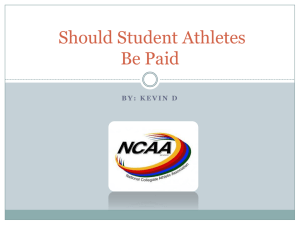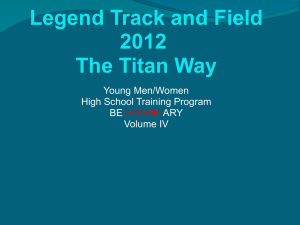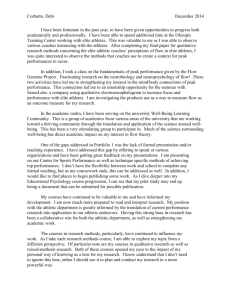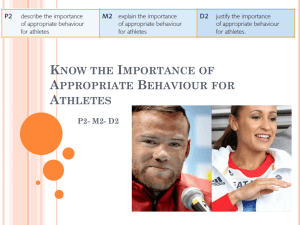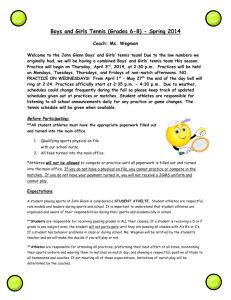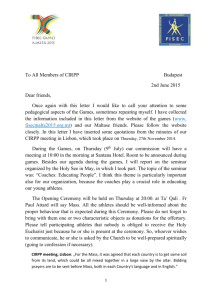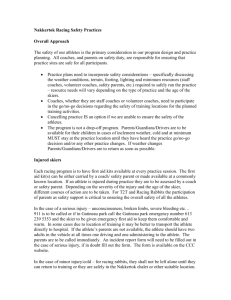Social Workers` Role with Athletes (1PowerPoint)
advertisement
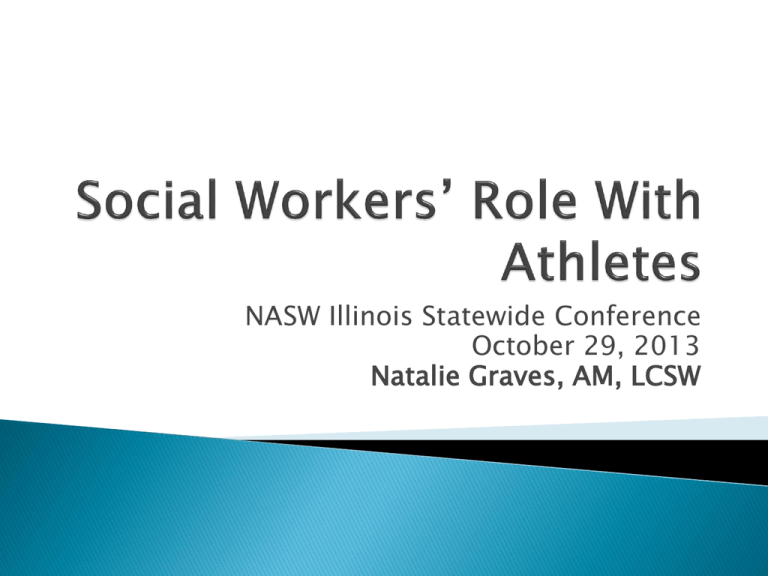
NASW Illinois Statewide Conference October 29, 2013 Natalie Graves, AM, LCSW To highlight mental health problems athletes can face. Participants will learn how athletes can be a vulnerable population. Participants will learn how social workers are well equipped to work with this specialized population through assessment, consultation, outreach and direct practice. Athletes Families Coaches/Sport Mental Health Professionals Society Student-athletes have unique pressures and stresses placed upon them by their parents, coaches, teammates, fans as well as themselves (Noreen, 2008). Student-athletes have a greater risk of mental health problems than their non-athlete counterparts yet are less likely to take advantage of mental health service (Gulliver, Griffiths, & Christenses, 2012). The psychological state of someone who is functioning at a satisfactory level of emotional and behavioral adjustment. A mental illness is a medical condition that disrupts a person's thinking, feeling, mood, ability to relate to others and daily functioning…mental illnesses are medical conditions that often result in a diminished capacity for coping with the ordinary demands of life. National Alliance on Mental Illness NAMI Substance Abuse Depression/Anxiety PTSD Body Disorders* Alcohol Illicit Drugs (i.e. marijuana, ecstasy) Prescribed Medications (i.e. pain relievers) Steroids, Performing Enhancing Drugs (PED) Major May Depressive Disorder begin at any age Average age at onset in the mid- 20’s (College Age) Situational Depression position on team, stress) (injury, lost Athletes are experiencing post traumatic stress disorder (PTSD) after traumatic brain injuries. Eating Disorders (anorexia) ◦ Female athletes Overtraining Syndrome ◦ Body Builders Body Dysmorphic Disorder (BDD) BDD is characterized by complaints about medical or physical conditions that have no ascertainable physical or psychological cause. DSM-5 (2013) High school students have to deal with many stressful factors from class work to popularity contests…recent findings have indicated that high school male and female athletes do not have at their disposal the same mental illness treatment options available to college athletes (Keilman, 2012). High school is a turbulent time for adolescent development. The physical and mental changes brought on during puberty cause…fear in young men and women. Athletes have an added stressor in that they must perform at a high rate, in stressful environment under the watchful eyes of coaches, parents, and classmates (Keilman 2013). Attention-Deficit/Hyperactivity Disorders (ADHD) ◦ Lack of focus, over excited Separation Anxiety Disorders ◦ Family, Coaches Qualitative Semi-formal interviews ◦ ◦ ◦ ◦ High school players and coaches College coaches and players Mental Health Professionals Big Ten Athletic Director Semi-formal focus groups Literary Review Email - socialworkandsports@gmail.com Facebook Page – Social Work & Sports -Natalie Graves, AM, LCSW www.facebook/Nataliethesocialworker Blog – Sports, Athletes, and the Social Worker nataliethesocialworker@blogspot.com Twitter - @natgra and #NASWIL Website – Coming Soon!!!!


